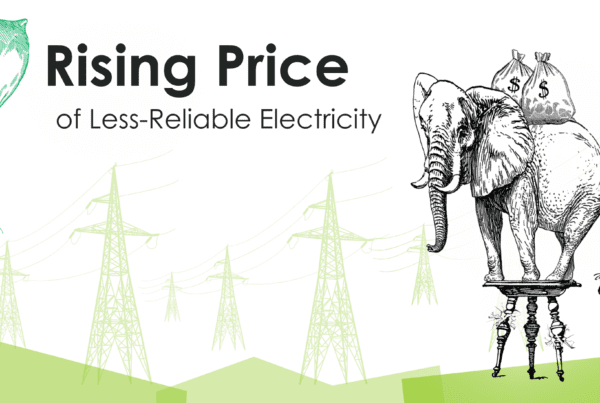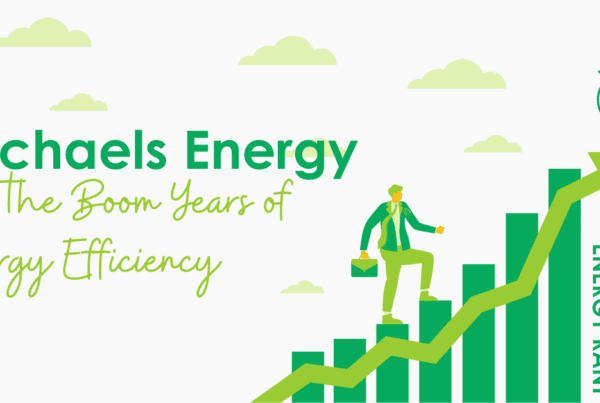
“We need some ideas for saving energy. Whaddya got?” Have you ever heard those lines? They are about as common as “Are we there yet? How much further?”
Last week I was on a working group call on the subject of emerging technology. They didn’t call it that, but that’s what it was. Specifically, the discussion centered around taking successful pilot work and broadcasting it nationwide to expand it to the mainstream. That is emerging technology or maybe market transformation.
From my brain, emerging technologies include proven technologies or approaches that are not yet widely common in the market or technologies that are likely soon to become cost-effective and/or successful. Examples include cold-climate heat pumps and electric vehicles. Again, let’s explore some elements required for successful emerging technologies from my brain and life experience.
Vested Interest
There needs to be a vested interest to deploy the technology from manufacturer to the user, and in the case of efficiency programs, the portfolio administrator. Of course, developers and manufacturers have a vested interest in selling their products, but why does the wholesaler, retailer, or contractor have an interest in such new technologies? In our case, why does the utility care about the technology?
The answers always boil down to making money. When everything is stripped away from happy customers to being environmentally sound, the real issue is money. If contractors make more money banging out gas furnaces, ductwork, and conventional central air conditioning, that’s what they are going to do.
I’m a strong proponent of putting the heating or cooling capacity where the load is – i.e., good zoning. Central air and furnaces have lousy zoning, if any at all. Multiple zone heat pumps, sometimes ductless, are excellent at zoning. Plus, they are deadly quiet.
Here is how to get the attention of buyers and contractors. A 100-year-old two-story brick building in an old downtown shopping and dining district for middle-aged duffers like me is converted into a first-floor restaurant with a second-floor cluster of guest rooms in an Airbnb lineup. There is one thermostat somewhere for all the rooms – one control point for a bunch of diverse rooms. What could possibly go wrong? It was roasting hot outside, but our suite was freezing. We had to call the owner to change the temperature. After that, someone else is likely hot or cold. The guy will lose customers, guaranteed, because customers don’t have control over their space.
Non-energy benefits, man. Sell what people care about. Energy savings come along for the ride. By the way, net-to-grossers, comfort, convenience, safety, etc., introduced by the program to the customer/contractor is 100% influence, whether or not energy impacts were part of the decision.
About the money? Compare lost occupancy at $200 per night to a few bucks of energy savings — $200.
Cool, Hip, Funky, Dreamy
Let us talk cars for a bit. Tesla has been modestly successful to date. In 2016, Tesla’s sales goal was a million units per year in 2020. Actual sales were just under a half-million units. Tesla’s buyers are cousins of Corvette, Porsche, or Aston Martin buyers. “Someday…” their covetous idolizers want to get one. Essentially, owning one is a destination, achievement, or a toy (like a motorcycle) rather than a retail automobile for personal transportation. I applaud that.
I believe a major test for EV adoption is the electric version of the top-selling vehicle in the United States – the Ford F150, aka, the thunder, lightning, or something like that. Besides farmers, contractors, and builders, etc., why do people buy these trucks? I don’t know either.
Trucks are status symbols for an audience with mostly opposite or indifferent values to those of EV owners. The thing any EV, including trucks, boasts is power. You can burn the radials off these things quite handily. Is that enough for truck buyers? Time will tell. By the way, these trucks, EV or not, retail around $50,000. Buyers don’t care about fuel cost, although sure, they’ll complain about high gasoline prices.
Although a bit dated, I provide a couple of well-targeted truck ads below. Check ‘em out in order. In the second, GM takes a shot at Ford’s “feature.”
Easy to Understand
Although I don’t necessarily want to focus on heat pumps and passenger vehicles only, they are great examples. People understand the electric vehicle, and that is largely why the uptake to date is limited. Potential buyers understand that if their string trimmer runs out of juice, and if it does so before the job is done, they plug it in and go back to house chores. This option is not available for EVs. They would be stuck with a dead two-ton chunk of mass.
Heat pumps, on the other hand: the average person doesn’t get it. I’d love to do man-on-the-street interviews with passers-by.
Do you live in a home?
Yes.
Is it heated?
Yes
Good. Good. What heats it?
Radiators.
Do you know what a heat pump is?
🙄🤨😡
You might as well explain what you do for a living at a wedding party. Do it fast and change the subject quickly if you want to keep visiting with your acquaintance or companion, or they will be gone.
TBC
Okey doke. We talked about a few boxes that need to be checked for an emerging technology to be successful. There is plenty remaining to resume and maybe complete this topic next week. Stay tuned!






